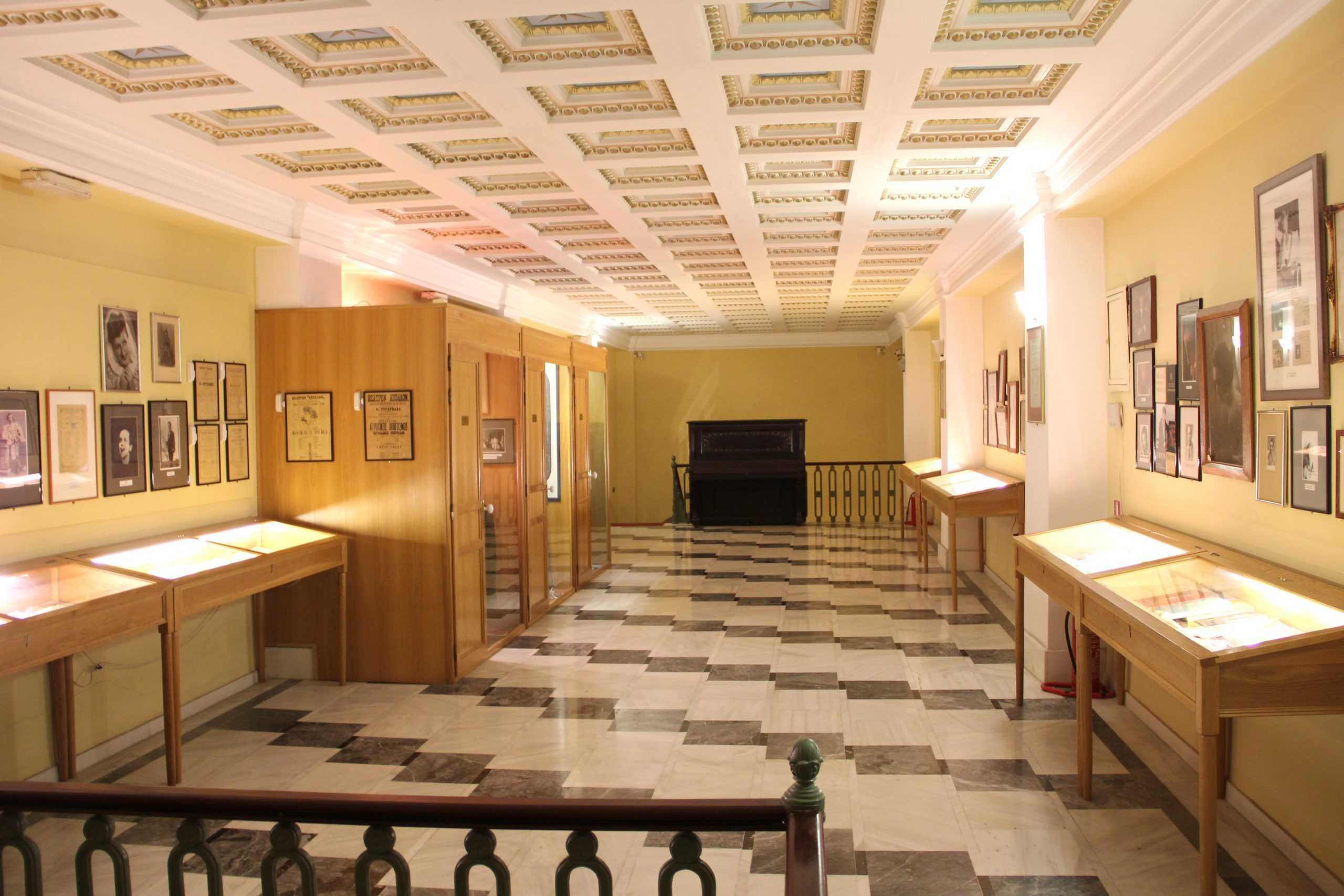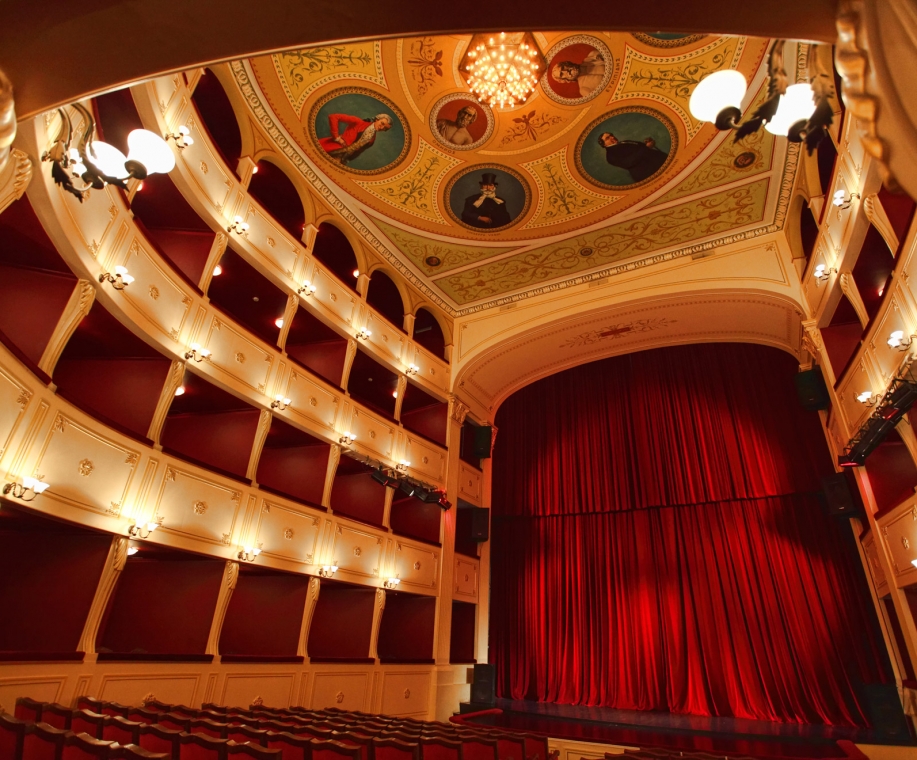
History
The profound need for a permanent home to accommodate the city’s continuing artistic activity that as early as 1828, was hosted in makeshift venues, such as timber warehouses, coffee shops and clubs, led the City Council endorsed the construction of the theater. The building was constructed within two years time (1862 - 1864), based on the designs of the Italian municipal architect Pietro Sambo. Its architecture follows at least four Italian theater standards: “La Scala” in Milan (1776), “Teatro San Carlo” of Naples (1816), the academic theater of “Castelfranco” (1745), and “Teatro della Pergola” of Florence (1755). It was inaugurated on April 20, 1864, with the opera “Rigoletto” by G.Verdi, and three parallel opera performances: Donizetti’s “La Favorita”, Verdi’s “La Traviata” and “Ballo in maschera”.
The Apollon Theater enjoyed years of heyday along the unique prosperity of the city of Hermoupolis. Over the years, distinguished artists and leading theater companies, from Greece and abroad, performed on its stage a variety of repertoire focusing largely on opera. The theater remained in the spotlight, attracting the attention of famed performers even when the economic recession of the city had become noticeable, from the beginning of the 20th century until the
interbellum. The theater history of this period is documented in a valuable four- volume work by the poet and writer Manos Eleftheriou. During the occupation time, the theater was used by the Italian and later by the German guard as a movie house. After the liberation, it went on functioning mainly as such, operated by a local businessman, and occasionally hosting theater performances. Its last inspired moment was the theater play “Shadow” by Dario Nicodemi, which was the farewell performance of the famous Greek actress Marika Kotopouli (1953). Shortly after, the theater closed, deemed unsafe and unsuitable for performances.


During the 70’s, in a poor reparation attempt, which was left incomplete due to insufficient funds, the theater’s interior was severely altered.
The amateur theatre associations of Syros fought with all possible means to save the theatre, performing in unsafe conditions for almost two decades when the building was falling apart, while their campaign banner “Why have you abandoned me”, hanging on the front facade, communicated their struggles and agony to the whole country.
Answering to the unremitting requests of the local community, the authentic restoration of the theater begun in the 90’s and the theater reopened on July 17, 2000, with Theophrastos Sakellaridis' Operetta "Vaftistikos", performed by the "Athens Chamber Opera". The renovation was realized during Giannis Dekavalla's mayoral tenure, with funds from the European Union and the Greek Ministry of Culture, based on the designs of an architectural team led by Peter D. Pikionis.
The magnificent wall paintings and ceiling murals that embellish the building’s interior were created by Dimitris Fortsas.
Today, the theater hosts throughout the year various productions and international festivals with music, opera, theater, dance performances, and more. On the third floor of the building, a small exhibition of posters, programs, photographs, artifacts and personal items, offers to visitors a glimpse into the theater’s great history. In 2014, the Apollon Theater celebrated 150 years of life, passing onto a new era of development, aspiring to sustainability and modernisation. In 2020, the theater marked 20 years in its recent history since its reopening
and constant operation.
Copyediting: Lena Chatzigrigoriou

Exhibition area
The exhibition area on the 3rd floor foyer of the Apollon Theater carries visitors to another era. Exhibits include showcases of documents, posters, programs, sketches, old tickets, photos of actors and other celebrated personalities that enjoyed its heyday. The collection is complemented by three dressing rooms with the personal items of the renowned tenor Zannis Kampanis (1908-1992), the greek actresses Anna (1918-2010) and Maria (1916-2006) Kalouta and the distinguished actress Eleni Papadaki (1908-1944), as well as the piano of the famous composer Michalis Souyioul.




